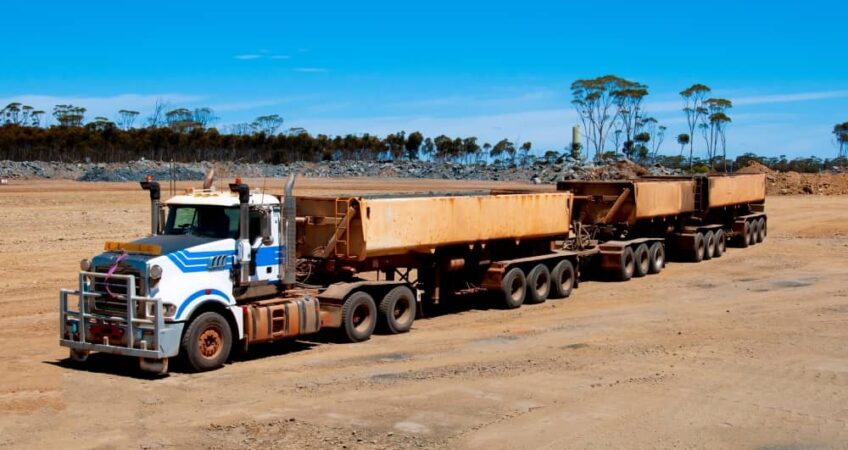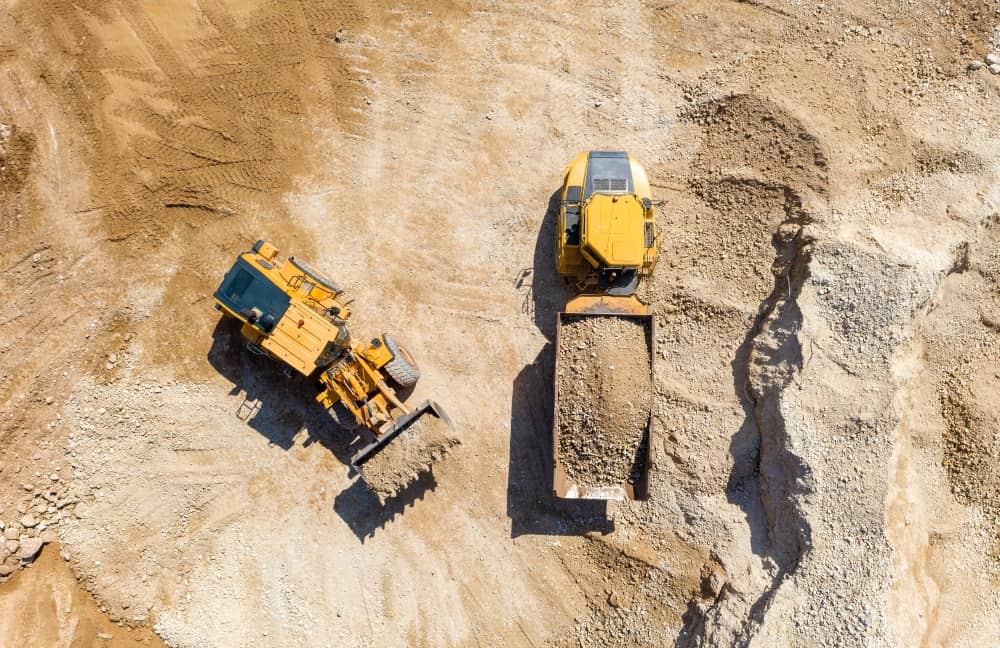
Australia’s mining industry, although lucrative, is fraught with challenges, especially concerning logistics. It’s a sector with several complexities, spanning from planning and coordination to transportation execution and operation.
10 Common Mining Logistics Challenges
Mining generally takes place in the country’s vast, remote regions, which is already a significant hurdle on its own. And there are more that mining companies, miners, and managers grapple with almost daily. Knowing these critical issues can help identify problems and improve logistics operations. So, without further ado, let’s talk about these logistical challenges in Australia’s mining industry:
1. Transportation to Remote Locations
As mentioned above, mining operations mainly occur in remote areas. Hence, they are far away from supply centres and other established infrastructure. This ultimately makes transporting heavy equipment, materials, and people to these mining sites difficult and requires longer travel times.
Any thriving mining business has invested in transportation infrastructure, including roads and railways. Unfortunately, not everyone can afford such a hefty logistical and financial investment. As a result, it is incredibly challenging for newer and smaller companies to access remote mining locations, causing delays and sometimes disruptions in their operations.
These issues, if unaddressed, can lead to production downtime, particularly if critical materials, such as equipment spare parts or repairmen, take too long to reach the destination.
2. Large Equipment Handling
Moving oversized and heavy supplies and equipment to remote mining sites can contribute to a more complex logistical operation. There is often a need for specialised transport, such as cranes and heavy-duty trucks. Sometimes, a custom-designed solution may be necessary to carry and move heavy machinery.
It’s not just for convenience but for safety, as well. Mining operations require large, bulky equipment that should be properly secured during transportation. Additionally, all safety protocols, such as securing equipment and training personnel, must be followed to prevent injuries and accidents.
3. Rising Transportation Costs
In line with the above, transporting anything bulky can be expensive because specialised transport and handling are typically necessary. Unfortunately, travelling may require permits. Plus, the law dictates following slower speeds on the road. Slow travel increases transportation costs, which have become a significant area in the overall logistics budget for mining. The already substantial transportation costs continue to rise, eroding profit margins, especially for remote and inaccessible mine sites.
Some may argue that the percentage of logistics costs of an Australian mining company is negligible when considering the total operating expenses. However, re-examining and addressing these logistical challenges could uncover millions of dollars in profit.
4. Expensive Fuel
Australia, just like many countries of the world, is still trying to overcome high fuel prices. While struggling to manage, expensive fuel can affect the mining industry in many ways. Companies that heavily rely on machinery and vehicles can quickly feel the impact of the high fuel costs on the profitability of their operations.
Transportation is a significant part of mining. Expensive fuel directly affects transportation expenses, making the activity less economical, especially for long-haul deliveries. And because fuel costs can cause strain on the budget, a company may choose to reduce the allocation of resources to specific areas, such as equipment maintenance and even safety.
5. Poor Planning and Forecasting
Planning and forecasting inadequacies can encompass a range of problems in mining logistics. For one, it can result in shortages of chemicals and other essential mining materials, which may not only delay production but halt it entirely. It can also cause inventory mismanagement, where the mining business stores excessive inventory or understocks essential items. Either way, it can lead to logistical challenges, particularly involving capital and storage space.
However, the biggest concern is with the movement of equipment and supplies to and from mine sites. It’s tough to allocate resources efficiently and respond to changes without proper planning and forecasting. For example, weather fluctuations or unexpected events can often require transportation route and mode changes. If not planned for, it’s easy to see an increase in fuel consumption, workforce requirements, and environmental impact.
You May Also Like: How Are Mining Trucks Transported: A Step-by-Step Guide
6. Inefficient Employee Management
Employee mismanagement has a considerable impact on productivity and safety. A common issue is slower loading and unloading, which can also lead to extended waiting periods. This affects the overall efficiency of mining logistics. Additionally, if unsupervised, there may be a heightened risk of accidents and injuries when transporting products or equipment, which not only disrupts operations but also increases costs.
Inefficient management of employees often results in poor communication between logistics teams. It can hurt the flow of moving materials due to misunderstandings and miscoordination. Also, it can result in both understaffing and overstaffing, leading to inefficient resource allocation.
7. Fleet Maintenance Costs
Various factors influence overall fleet maintenance costs, including vehicle age and condition. The older the vehicles, the more maintenance is needed, which certainly results in higher costs. While regular maintenance can help reduce expenses, working with newer vehicles is typically the more cost-effective choice.
Another issue pertains to the vehicle type, as some are more complex than others. For example, heavy-duty trucks and specialised equipment have more intricate systems, often leading to more expensive maintenance.
8. Limited Supply Chain Visibility
A mining business should be able to track and monitor the movement of goods, equipment, personnel, and information within the supply chain. However, some instances can impact supply chain visibility, resulting in higher costs and inefficiencies. For example, the unavailability of supply chain management software and data analytics tools can cause the derailment of data collection and analysis across the supply chain. It can also affect the accuracy and timeliness of data, which has a significant effect on the decisions that the management makes.
The company’s logistics network can also affect visibility, particularly in mining, which involves several complexities with carriers, distribution centres, and suppliers. The more extensive and multifaceted the network, the more advanced the systems should be to maintain visibility.
9. Government Regulations
Like any other industry, mining has a set of rules and regulations that every business must adhere to. These laws can substantially impact mining logistics, including strict safety standards and environmental regulations. Companies may also have to deal with permits and licences that should be obtained before operations. Obtaining these documents can often be time-consuming, which can significantly impact logistics planning.
Bear in mind that the Australian government does not control workers’ health and safety in the mining industry as individual states and territories regulate it. Therefore, the rules in your state may be different from those of Western Australia, which is governed by the Mines Safety and Inspection Act 1994 and Mines Safety and Inspection Regulations 1995.
10. Environmental Issues
The influencing regulations and operational practices, not to mention sustainability decisions, all have a direct impact on mining logistics. Non-compliance in Australia can result in hefty fines and the potential cancellation of permits or licenses.
Starting a mining project typically requires an environmental impact assessment to identify potential environmental risks. This assessment makes it possible to develop mitigation measures and address challenges in mining logistics.
How Australia Wide Haulage Can Help
Australia Wide Haulage has several years of experience in mining logistics. We offer heavy transport for mine sites in Perth and Western Australia, as well as Queensland and South Australia. With our expertise, resources, and specialised transport services, we can provide valuable assistance for any mining business facing logistical challenges, such as handling sizeable, bulky equipment in remote locations. Contact us today to learn more.

